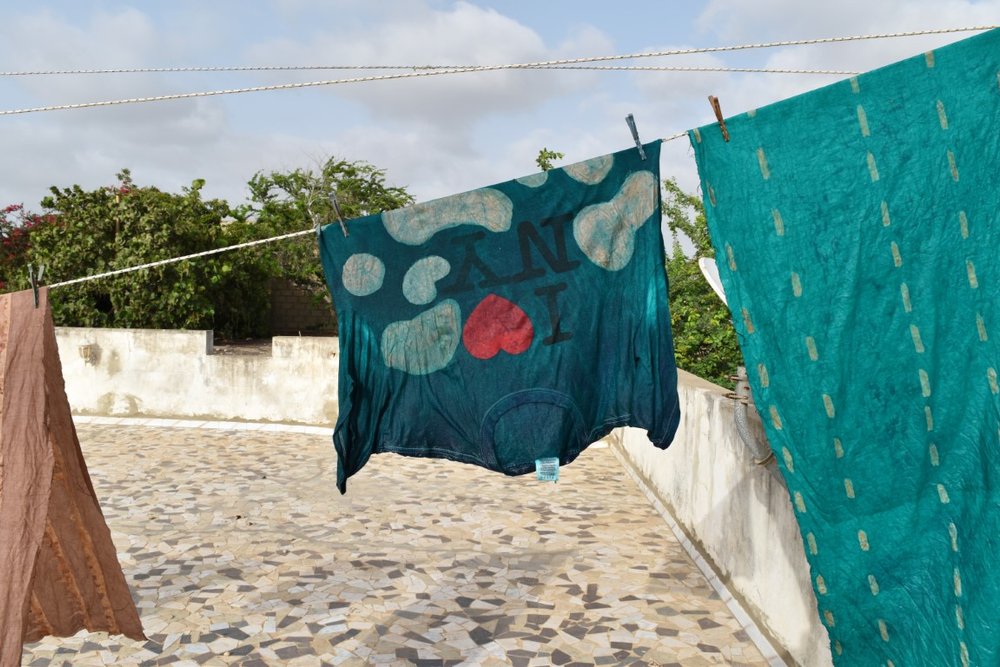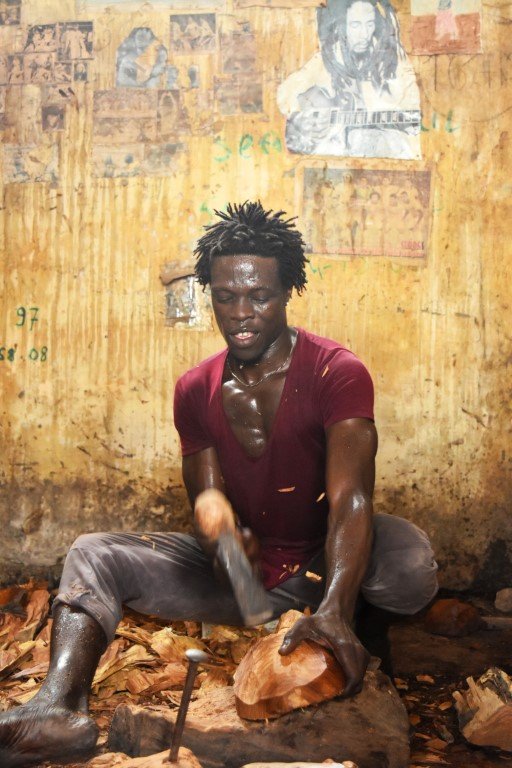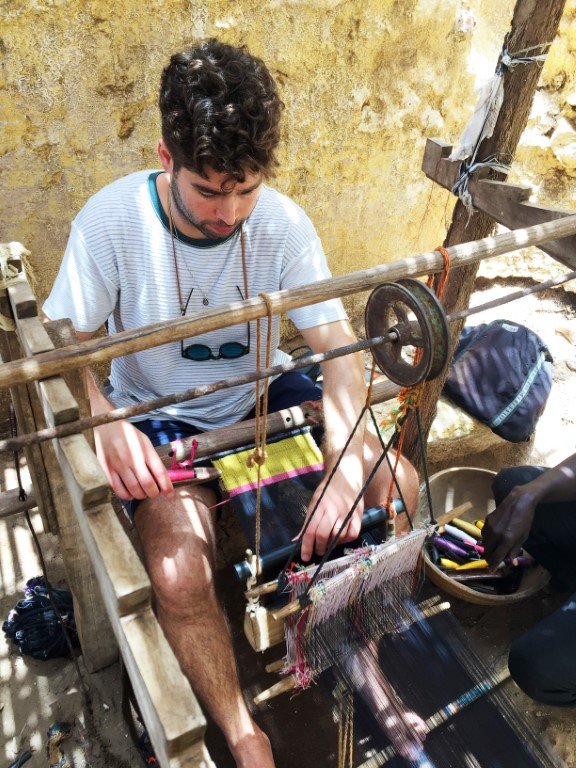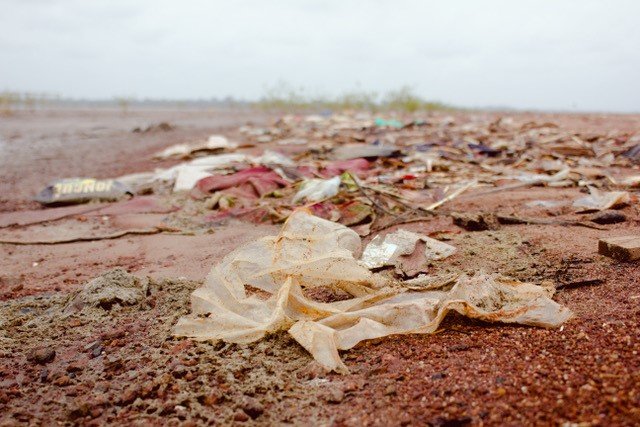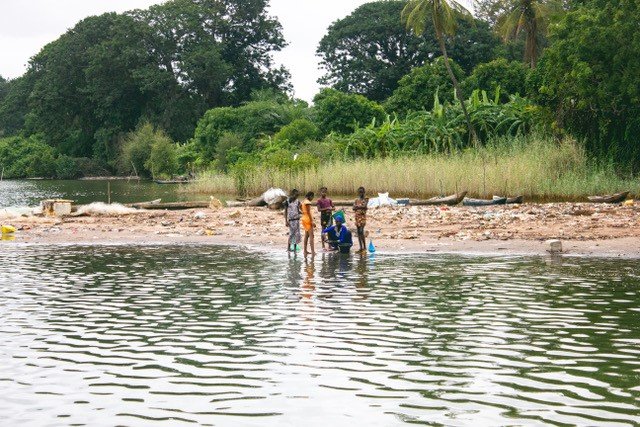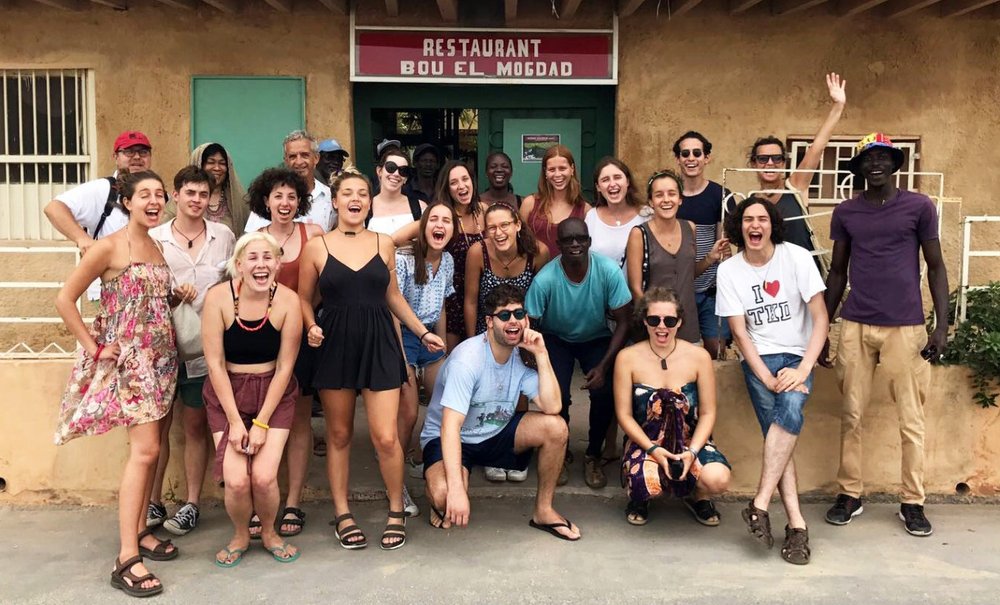Route-Artlantique, Senegal
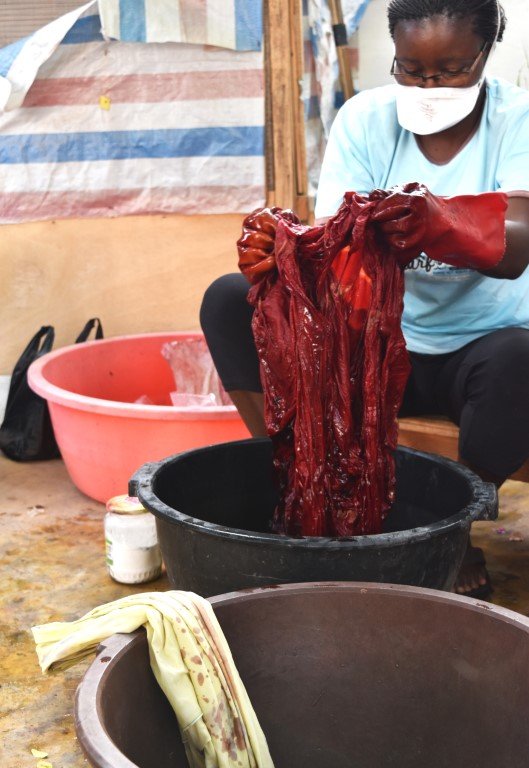
Route-Artlantique is a unique opportunity for students from across Europe to engage in a cross-cultural experience to explore design thinking and innovation from an international perspective. Via a series of workshops, across two weeks, students travel through three coastal regions of Senegal, West Africa experiencing first hand traditional arts and craft as used on an everyday basis by local practitioners as well as working alongside contemporary Senegalese artist and designers.
Students from several LCC courses have participated in the second and third Route-Artlantique. In 2018, Graphic & Media Design students Maxwel Fabiano Da Silva and Ana Carina Figueiredo took part whilst completing their Design for Professional Studies year.
Carina and Maxwell reflect on their experiences;
“Senegal was such an inspiring and rich experience, being able to see how happily people live their lives. They will give you the little they have, just to make you feel welcome. It was a life lesson.
I remember the thing that shocked me the most was the trash, on the streets, on the beach… water bottles and water bags were everywhere on the beach. I decided to grab a bin bag and start collecting all the plastics – I wanted to see the reaction, would it create any impact? In the end, it didn’t make sense for the locals, they couldn’t understand why was I doing it. After having a talk with one of them, she explained to me that it was like Maslow’s pyramid of needs; if they don’t have access to a basic need, how can they be aware of secondary obligations?
I also started analysing what was in the piles of trash and buried in the sand – you could identify things that didn’t belong there – mostly plastics, trash that was coming from Europe, dragged by the flow of the waters.
After coming back from my Senegalese Trip, a lot has changed. As I got back to London I was angry… this plastic problem was everywhere… I have since been trying to consume the least plastic possible. I started looking for artists, designers, and activists, people that were doing something to change this worldwide problem. I’m part of it now, I’m doing the best I can and to share this knowledge.”
Ana Carina Figueiredo
‘Responsible design is can alter everyday life. Design responsibility can help solve the challenges of a community and the needs of the environment, sustainably, improving people’s lives for the better, no matter how small that change may be.’
Ana Carina Figueiredo, Year 4 Graphic & Media Design student
“Looking from a designer point of view, there are two words that can describe how arts and design in Senegal are created. These words are ‘simplicity’ and ‘improvisation’. The scarcity of resources and technology forces people to be cleverly creative and this proves that it is possible to be creative without only relying on computer programs. This also creates a culture of repurposing materials that is another good example of improvisation. I could learn a lot being there.
What is important in Senegal is that priorities in design are not the same as in the developed world. The idea there, it seemed to me, is that the work needs to communicate in the most easy and cheap way possible. The need for traditional methods and tools of creation is still current there… Design there does not require such a high finish – that is because the population has different priorities. It is possible to find a market for design in the capital Dakar, but outside there the best typeface, a good colour scheme or high resolution images will not matter when food is scarce, you have to walk a long way to find drinkable water, the education is poor or you do not have a comfortable place to live. The cultural and religious traditions help to keep some creativity happening in the country. It is in their everyday lives, their accessories, tools, clothing and religious artefacts that you will find great sources for inspiration.”
Maxwel Fabiano Da Silva, Year 4 Graphic & Media Design student

